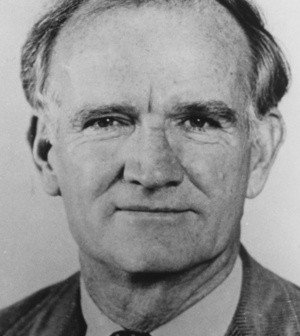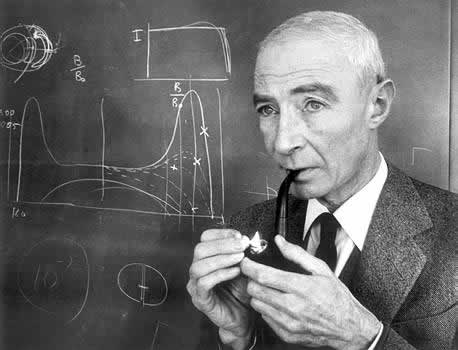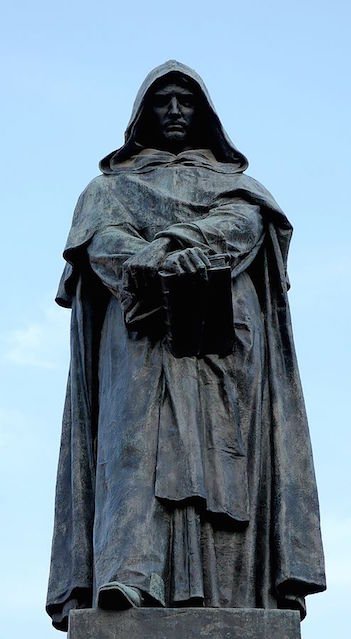Val Logsdon Fitch, (10 March 1923 – 5 February 2015), Particle Physicist and Nobel Prize Winner in Physics, 1980. Died aged 91.
“At any one time there is a natural tendency among physicists to believe that we already know the essential ingredients of a comprehensive theory. But each time a new frontier of observation is broached we inevitably discover new phenomena which force us to modify substantially our previous conceptions. I believe this process to be unending, that the delights and challenges of unexpected discovery will continue always.” – Val Fitch [1]

Val Logsdon Fitch was an ordinary Nebraskan public-school educated solider at the start of World War II. He was son of a cattle rancher and a school teacher. He graduated valedictorian of his high-school in Gordon, Nebraska. He was 20 years old and had completed two and a half years at Chadron State College when he was drafted in 1943.
The twists of faith that were so often doled out during the war were kinder to Fitch than to most. He was assigned to the laboratories of the Manhattan Project in Los Alamos as a technician for the duration of the war. There he worked with English nuclear physicist Ernest Titterton and met the stars of early twentieth-century physics such as Niels Bohr, James Chadwick and Enrico Fermi. He learned much about experimental physics and took note that the great physicists also knew about electronics and sought to do the same. Fitch worked on the detonators and was responsible for the timing signals that exploded the first atomic bombs in 1945 which he witnessed first hand in Los Alamos. [2]

After the war he finished his bachelor’s degree in McGill University, earned his PhD at Columbia and then moved to Princeton where he remained until his death on the 5th February 2015. His work in Princeton with his colleague James Cronin was rewarded with a Nobel-Prize in 1980 “for the discovery of violations of fundamental symmetry principles in the decay of neutral K-mesons”, or that there is a “basic lack of symmetry between matter and anti-matter” [3]. He was an important twentieth century physicist and played a role in science policy in the United States serving on many government committees including the President’s Science Advisory Committee and was President of the American Physical Society from 1988-89.
Fitch was among the generation of young physicists who emerged from the war and forged the way for focus on particle physics. Their insights and discoveries into mesons paved the way for contemporary research, for example that carried out in the Large Hadron Collider at Cern.
Read: nobelprize.org on Fitch.
Read: Richard Rhodes: The Making of the Atomic Bomb 25th Anniversary Edition (2012).
Historic Obituaries
Robert Oppenheimer (22 April 1904- 18 February 1967), Nuclear Physicist.

February is also the month in which, arguably the most famous Manhattan Project physicist, Julius Robert Oppenheimer died. Oppenheimer had a vastly different upbringing to Val Fitch. He was born into a wealthy family in New York, attended Harvard followed by the University of Cambridge in the Cavendish Laboratory and the University of Göttingen under Max Born. He taught at Caltech and Berkeley before the war and joined the Manhattan Project in 1942. Oppenheimer was present at the Trinity test and played a crucial role in the creation of the atomic bomb. After the war he worked as chief advisor to the atomic energy commission and became the director of the Institute for Advanced Study in Princeton. His security clearance however was revoked in 1954 during the red-scare due to his sympathies with communism before the war and his connection to members of the communist party including his brother and wife. This move had been considered in 1943 but he was deemed to be too essential to the project. Files declassified in October 2014 from Oppenheimer’s hearing are said by historian to prove that Oppenheimer was not disloyal [4]. He continued to direct and lecture at the Institute for Advanced Study in Princeton until 1966 when he fell ill and died of throat cancer in February 1967.
Read: Robert J. Oppenheimer: A life inside the Centre by Ray Monk (2013).
Giordano Bruno (1548 – 17 February 1600), Renaissance priest and scientist burnt at the Stake.

Four hundred and fifteen years ago on February 17th 1600 Giordano Bruno (born 1548) was burned at the Stake in Rome after nine years imprisonment and questioning by the inquisition. The exact reason for his heresy is unknown as the files are apparently missing from the Vatican archive (there’s a Dan Brown novel in this story somewhere). Speculation includes his belief in Copernicanism and, brilliantly before his time, the infinity of the universe. He was a Dominican priest who was chased from Naples and Rome by the Inquisition. He spent his time from 1576-1591 in France, England and Germany where he quit his priestly duties, lectured, and was supported by wealthy patrons. He was arrested by the Inquisition when he moved to Venice in 1591 and enjoyed no freedom for the final nine years of his life. Unlike Galileo, who died from natural causes under house arrest forty-two years later, Giordano Bruno was burnt at the stake for his heretical views. Because of his gruesome fiery end he is remembered as a martyr of science and is a reminder that science we now take for granted was once a dangerous belief. A statue of Bruno stands in the spot where he was burned in Campo de’ Fiori in Rome and has been a meeting place and symbol of freedom of speech and courage of conviction since it was erected in 1889. His heresy has never been pardoned.
Read: Ingrid D. Rowland’s book Giordano Bruno Philosopher/Heretic.
Read: The Galileo Project.
[1] http://www.nobelprize.org/nobel_prizes/physics/laureates/1980/fitch-bio.html
[2] http://www.princeton.edu/main/news/archive/S42/32/62C77/index.xml?section=topstories
[3] http://www.nobelprize.org/nobel_prizes/physics/laureates/1980/fitch-speech.html
